'The Möbius Book' by Catherine Lacey
'There's nothing wrong with inventing a story to explain something real to yourself.' —Review #259
My original plan this week was to feature short-story collections, but then I went to a packed Greenlight Bookstore for the launch of ‘The Möbius Book’ by Catherine Lacey. I had been interested in Lacey’s work since we included her novel ‘The Biography of X’ in a BoG reader’s choice poll, but I knew nothing about ‘Möbius’ beyond remembering that my newsletter friends
and had both recently featured it (links below). While Lacey and her interviewer discussed the new release and its unique composition—it’s part novella, part memoir and maybe also an entirely new literary thing—I realized I couldn’t continue with the short-story plan. I was like:
When I got home, I looked at the book I had just bought. It has the same cover on both sides—one leads into the fiction part, the other into nonfiction. Which way to begin? I left it to chance and flipped the book into the air like a coin. Heads or tails? It landed on the bed memoir-side up.
Here’s the book’s cover:
In ‘The Möbius Book,’ Lacey reckons with the end of her marriage. Her then-husband told her it was over via an electronic message sent from another room in their house. We, the Greenlight audience, gasped. After this revelation from her spouse, identified as The Reason, she briefly takes up residence in their attic’s guest room before embarking on a journey—both physical and introspective. She moves from friend to friend—from couches, to guest houses to idylls abroad—and through memories and emotions to unpack her relationship with The Reason and what went wrong. I was like:
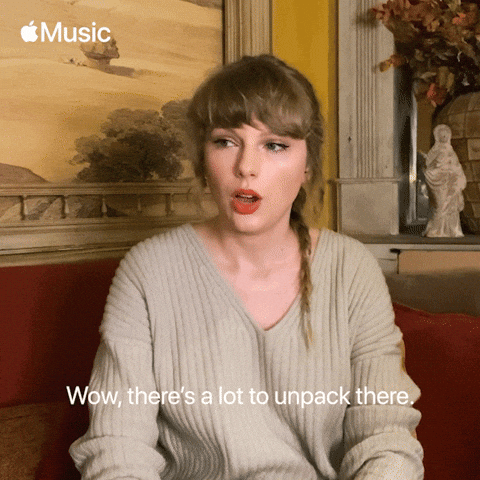
There’s The Reason’s gaslighting, need for control and emotional violence. There’s her shock and disorientation after the breakup that leads her to explore her troubled family history, her religious upbringing and lost faith, and her eating/body issues, among other things. Along the way, she has allegorical moments—a teacup is smashed, for example, and a ghost may or may not get exorcised from her body—that are symbolic for a person trying to find their footing after a traumatic event. Flip the book over, and a woman named Marie is expecting the arrival of her friend Edie, who’s just gone through a bad breakup. When Marie is walking in her building’s hallway toward her apartment, she notices what appears to be blood seeping out from under a neighbor’s door. Edie doesn’t mention the blood when she arrives and begins to recount the end of her relationship, but Marie can’t stop thinking about it. Has there been a murder? Was someone injured? Is there looming danger? Or did she imagine it? It’s difficult to explain without giving too much away, but both sides of the book connect to each other. Issues raised in one format are explored in the other, like the Möbius strip that gives the book its title. I found the perfect GIF for Lacey’s journey through her book, and it’s from our friend
:Here’s one example of the interconnection. As I was reading the memoir side, I thought about how Lacey was experiencing a rare and privileged sort of grief, one seemingly uncomplicated by a requirement to be at an office desk promptly at 9 a.m., and also without menacing bills or other obligations many of us face. She also has so numerous friends who, despite many of them going through their own divorces and troubles, had the bandwidth and the physical space to support her. I found this both wonderful and frustrating—it’s great to have such a network, but perhaps she was taking it for granted, as if it’s something all of us have access to. This issue came up in the conversation between Edie and Marie. Edie mentions that after her breakup, she took off for Greece. Marie gets testy, because after her own collapsed relationship she did not have the means to go away. I was like, ah, OK:

‘The Möbius Book’ is a triumph of technique and form. I admire how Lacey uses both fiction and nonfiction for self-exploration; the parts cohered into a sharply written and clever story. I’ve never encountered anything like it, and it felt new and unique. Also, I love how the book’s design reinforces its dual structure, though I agree with the folks who have said we could do without a bar code on BOTH sides (but committing to the bit requires such sacrifices, I suppose). There were moments, however, when I struggled to connect with Lacey’s journey, but even so, I hope the book helped her find what she was searching for (catharsis? revenge? a bit of both?). Memoir is not my favorite format (and, let’s be honest, nothing will ever top Julia Fox’s ‘Down the Drain’), but I am glad I switched up my plans to read Lacey’s book. It’s a quick read, and if you’re looking for a unique take on a tough breakup, it’s definitely worth checking out.
An opening excerpt, from the memoir side:
Odd impulse to catalog these days, not that I can forget them, not that I can remember them clearly.
I woke in the guest room, the attic, a guest in my own home. I’d never slept a night in that room, and staring up at the white clapboard ceiling and walls, I felt I’d been shrunk down and shoved into a doll’s house, and I knew then—again, or for the first time—how grief expands as it constricts, how it turns a person into a toy version of herself.
A man downstairs was The Reason I’d turned from inhabitant to visitor.
My phone rang. The Reason was calling me from the floor below. He wanted to know if I would say goodbye to him before I went to the airport.
What have I been doing all week, I asked, if not saying goodbye to you?
I hung up.
An opening excerpt, from the fiction side:
Edie’s on the line, says she’s coming over, says it’s urgent, no context.
Of course, Marie says, but where are you now? Where have you been? Dial tone. Marie returns the receiver to its cradle, turns off the ringer for the night. A landline. How quaint. When she goes out, nobody can reach her.
Two locks and a deadbolt, closing the door, locking all three behind her. Everyone here lives like this, though they smile and say hello to each other in the hallways. Marie, too, smiles and says hello—but you can’t trust anyone who would chose to live here, such a place between places.
Down four flights, out the front door, down the block to the corner, to one of the very last pay phones in the city. The pay phone has been one of the main reasons she’d chosen this bleak and liminal neighborhood over the other bleak and liminal neighborhoods she could afford. Proximity to something so irrevocably stuck in the past.
Who Catherine Lacey thanked:
Lacey thanked a long list of friends and colleagues, but she also did something I love that very few writers seem to do: She thanked animals. She shouts out goats, pigs, chickens and, most importantly, Banana Bread the cat. The stray feline makes a significant cameo in the book that proves cats are wonderful and unknowable.
My rating:

‘The Möbius Book’ by Catherine Lacey was published by Farrar, Straus and Giroux in 2025. 240 pages. $25.11 at Bookshop.org.
What’s next:
Books on GIF does not solicit or accept review copies. We feature books we purchase at independent bookstores around New York City and on our travels, or were borrowed electronically from the Brooklyn Public Library.
Before you go:
ICYMI: Review #258
Read this: As mentioned above, here is what Martha wrote about ‘The Möbius Book’ (scroll down) and here is what Petya wrote (also, scroll down). In addition, Merve Emre (apparently a minor character in the book I somehow missed) interviewed the author for a Q & A in The New Yorker (subscription required). I’ve been saving it to read after finishing this newsletter.
If you enjoyed this review:
Thanks for reading, and thanks especially to Donna for editing this newsletter!
Until next time,
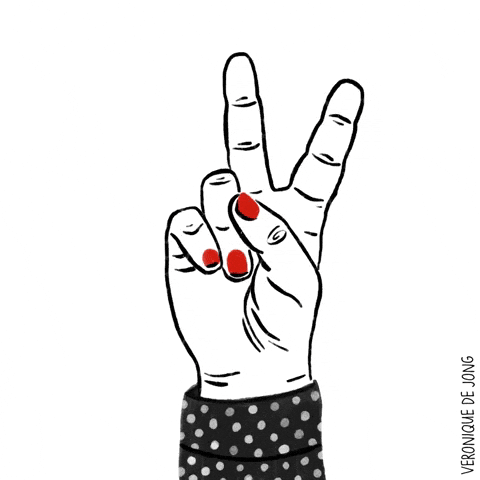
MPV





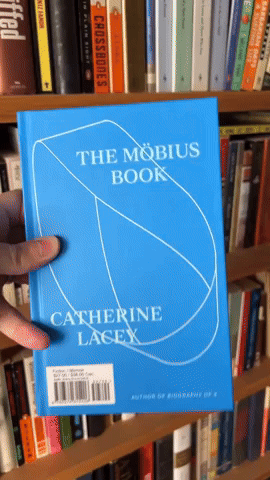

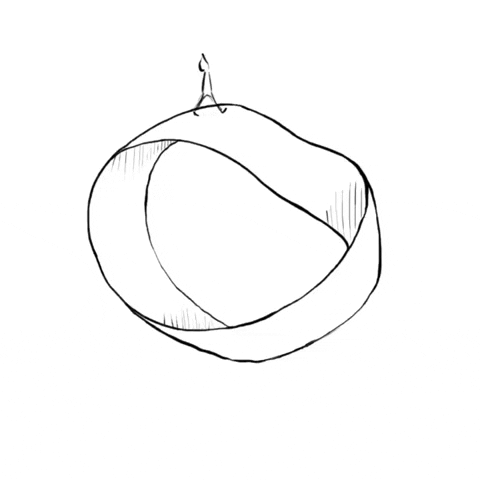
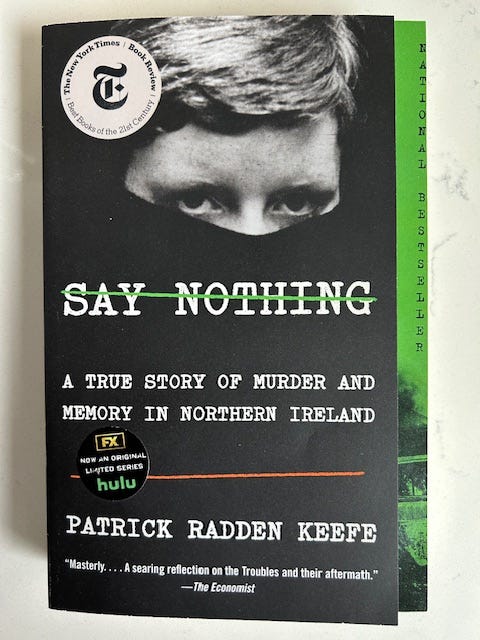


Very thorough and informative review! Not sure it’s for me but loved hearing your take.
I loved the acknowledgements and all the literary name dropping throughout the memoir portion. I guess if CL comes knocking, you gotta open up!